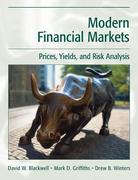Question
High Leverage (HL) and Low Leverage (LL) are two firms that are identical except of their capital structure which also affects their interest expense (higher
High Leverage (HL) and Low Leverage (LL) are two firms that are identical except of their capital structure which also affects their interest expense (higher leverage firms typically pay higher interest rates). Each firm has $2,750,000 in invested capital, $530,000 in earnings before interest and taxes (EBIT), and is in the 30% tax bracket. Firm HL has a debt-to-capital ratio of 48% and pays a 9% interest rate on its debt, while Firm LL has a debt-to-capital ratio of 33% and pays a 7% interest rate on its debt. What is the return on equity for HL and LL, respectively?
| 17.83%; 16.27% | ||
| 17.83%; 17.72% | ||
| 20.13%; 17.72% | ||
| 20.13%; 20.76% | ||
| 24.02; 20.76% |
High Leverage (HL) and Low Leverage (LL) are two firms that are identical except of their capital structure which also affects their interest expense (higher leverage firms typically pay higher interest rates). Each firm has $1,800,000 in invested capital, $408,000 in earnings before interest and taxes (EBIT), and is in the 35% tax bracket. Firm HL has a debt-to-capital ratio of 55% and pays a 13% interest rate on its debt, while Firm LL has a debt-to-capital ratio of 40% and pays an 11% interest rate on its debt. What is the return on invested capital for HL and LL (it will be the same for both companies)?
| 11.98% | ||
| 12.27% | ||
| 13.49% | ||
| 14.73% | ||
| 15.00% |
Step by Step Solution
There are 3 Steps involved in it
Step: 1

Get Instant Access to Expert-Tailored Solutions
See step-by-step solutions with expert insights and AI powered tools for academic success
Step: 2

Step: 3

Ace Your Homework with AI
Get the answers you need in no time with our AI-driven, step-by-step assistance
Get Started


